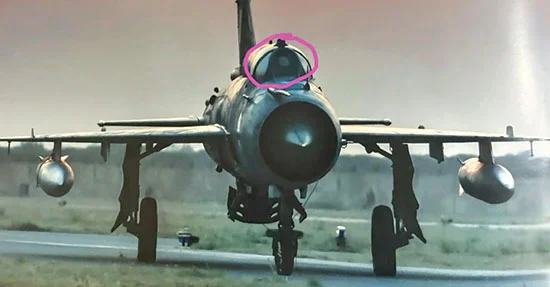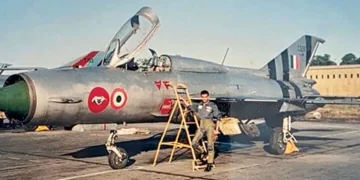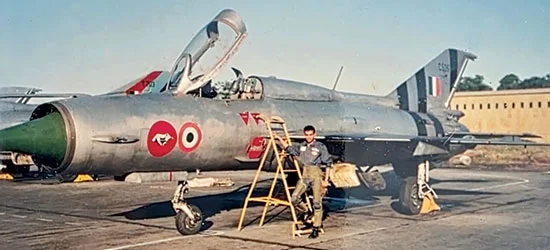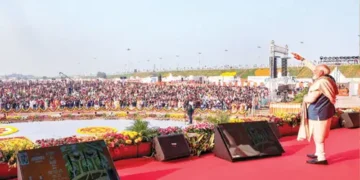 IT was a clear morning sortie, a highspeed run over the Ambala skies. Without warning, the pilot lost control of his MiG-21. In seconds, the aircraft became unmanageable, forcing the pilot to eject. Fortunately, he survived with only minor injuries and was admitted to the Military Hospital in Ambala.
IT was a clear morning sortie, a highspeed run over the Ambala skies. Without warning, the pilot lost control of his MiG-21. In seconds, the aircraft became unmanageable, forcing the pilot to eject. Fortunately, he survived with only minor injuries and was admitted to the Military Hospital in Ambala.
Back in Delhi, panic swept through Air Headquarters. Any hint of a control failure in the MiG-21 was a serious matter; flying across the fleet was immediately suspended. I was then serving at Air HQ as Deputy Director Engineering A (responsible for the MiG-21 Bis fleet). Within hours, I was tasked: “Rakesh, get to Ambala. Assist the Court of Inquiry. We need clarity – fast.”
Joining the CoI
At Ambala, I reported to the Court President: Group Captain (later Air Marshal) PS ‘Pudding’ Ahluwalia. His first reaction was blunt: “Why are you here? I already have a technical member.”
That member was that of late Sqn Ldr PK Sharma, a fine engineering officer. But once I explained that Air HQ had sent me, he relented. Soon after, he announced: “Rakesh, you’re now a full-time member of the CoI.” The first task was clear: to inspect the crash site properly. To my surprise, the CoI team had not yet visited in detail. I pushed for a full field visit – with squadron staff, instrument and engine fitters, packed lunch and recovery equipment.
The crash site lay more than an hour’s drive and then a long walk into rough fields. By the end of the day, we had recovered key items, including the SARPP, though the picture remained unclear.

Mounting pressure
Pressure mounted daily. Air HQ wanted answers. The Court President grew impatient: “What’s taking so long? What are you doing, and what’s the cause?” But finding the truth in a Category I accident was never going to be instant. I knew I had to be doubly careful. Pudding sir was anxious to wind up quickly, but the mantle of technical responsibility lay squarely on me. I decided to proceed only as per engineering prudence, even if it meant taking more time.
Back at the site, one mystery nagged us: where was the canopy? Scouring the debris field yielded nothing. So I suggested we retrace the flight path in reverse. That’s when we struck gold. Some 3–4 km back, scattered along the line, were shards of perspex. Piece by piece, we reconstructed almost 70 per cent of the canopy bubble. The revelation was clear: at high speed, the canopy had failed, blown clean off the frame. The pilot, suddenly exposed to the slipstream, experienced disorientation and partial blackout before pulling the ejection handle. This was not a control-system failure. It was a canopy failure. A huge relief – but not the end.
Lingering doubts
Still, doubts lingered. To rule out any hidden control malfunction, I insisted on retrieving the stabiliser booster (BU-210) and two aileron boosters (BU-45s). To Pudding sir’s visible irritation, I pushed for these to be taken to HAL, Nasik, for strip examination. Only then, I argued, could we write the judgment with confidence.
At Nasik, the boosters were dismantled in my presence. The findings astonished us: the components were pristine, with micronic clearances intact, despite having fallen from altitude. The MiG-21’s rugged design had once again proven its worth. Armed with HAL’s clean bill of health, I commenced writing the ‘Annexure to Appendices’. In those pre-digital days, that meant long nights at Ambala Base Ops, typing and arranging Xerox copies in town.
Persistence pays
Exactly one month after the accident, the CoI submitted its report. Flying restrictions were lifted, and the fleet returned to the skies.
Group Captain Ahluwalia, finally smiling, summed it up: “Good show, Rakesh, and your team!” For me, the episode was a reminder of what investigation truly demands: persistence, attention to detail, and the courage to hold the line against pressure – until the truth is found.
(The writer, commissioned in Aeronautical Engineering (Mechanical) branch of the IAF in 1971, served for 38 years. He has been an engineering officer for MiG-21 fleet in various capacities and had vast exposure of maintaining Russian fighter fleet of the IAF)
































